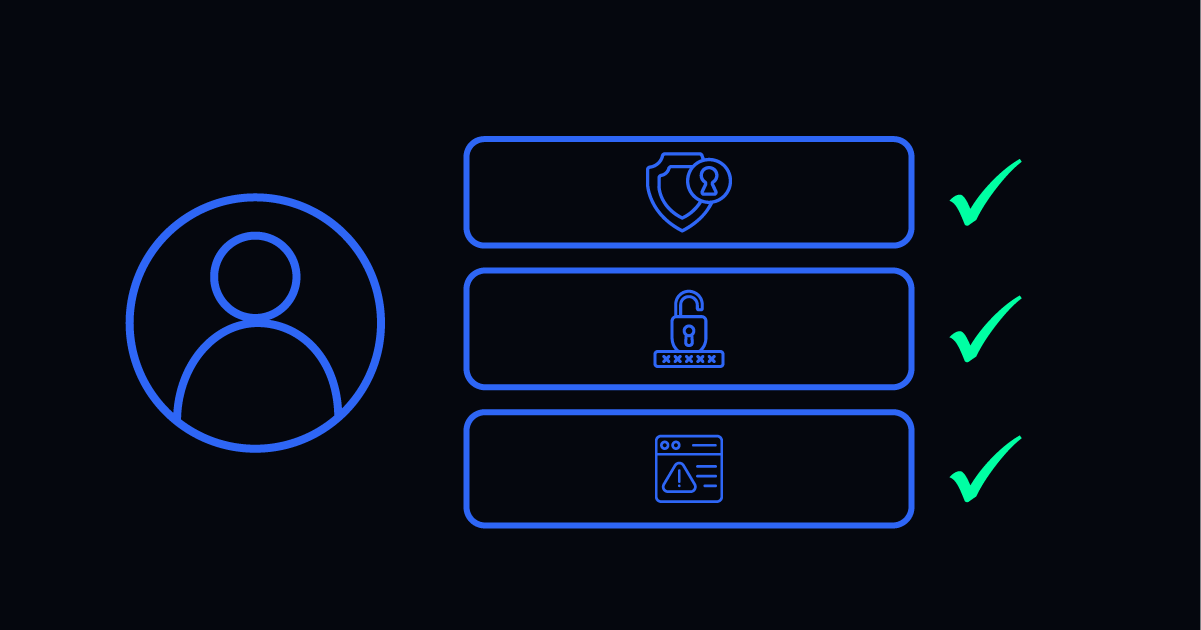
Drowning in Tickets? Your IT Service Desk Solution Might be Why
Subscribe to receive the latest content and invites to your inbox.
You hear that? It’s the unmistakable, terrifying flood of tickets rolling in!
Password resets, VPN issues, access requests, and performance alerts. The numbers climb faster than the team can respond. You’ve added automation, new tools, even a chatbot or two, but the tide surges on.
Here’s a plot twist: sometimes, your IT service desk solution isn’t solving the problem. Sometimes, it’s the thing keeping the problem alive.
Most organizations treat their service desk as a measurement system instead of a transformation engine. It counts, categorizes, and reports problems, but it rarely eliminates them. This leaves IT operators spending more time logging and triaging than resolving or preventing.
The first step toward fixing it is visibility. If you don’t know where your tickets come from, you can’t stop them. Today, we’re putting tickets squarely in the headlights and establishing a path to better, Zero Ticket™ IT.
The Hidden Cost of Every Ticket
IT tickets are like zombies. On their own, they might not be much of a threat. But when there’s a horde of them across the enterprise, the cost of dealing with them is absolutely enormous.
Every ticket consumes:
- Time. Even quick resolutions pull engineers away from proactive work.
- Money. Licensing fees, tiered support hours, and escalations add up fast.
- Momentum. Backlogs delay projects, lower morale, and frustrate end users.
Industry benchmarks put the average cost per service desk ticket between $15 and $50, and complex incidents can reach hundreds. Multiply that by thousands of monthly tickets, and the financial impact becomes impossible to ignore.
There’s also the opportunity cost that comes when IT is stuck firefighting instead of innovating. Every hour spent resetting passwords is an hour not spent improving infrastructure or security posture.
Ironically, many teams use their ITSM platform to track how bad things are rather than to make them better. When your service desk solution exists mainly to count tickets, you end up optimizing the wrong metric.
READ MORE: From Ticket Chasers to Trailblazers: Building a Proactive IT Culture
Why Most Service Desks Still Struggle
Traditional ITSM tools were designed for structure and compliance. They ensured accountability, created audit trails, and standardized support. But they were built for a world where manual resolution was the norm instead of the exception. And if organizations want to succeed, they can’t rely on a paradigm where manual resolution is the norm. There simply isn’t the time, bandwidth, or headcount.
How exactly have environments changed? Hybrid clouds, distributed teams, and nonstop digital demand, for starters. Yet many service desks are still operating on workflows built a decade ago.
Common pain points include:
- Fragmented tools. Monitoring, ticketing, and automation live in silos.
- Reactive culture. IT waits for problems instead of preventing them.
- Limited visibility. Reporting shows what happened, not why it keeps happening.
Executives don’t want more dashboards. In fact, nobody wants more dashboards. What everyone wants is measurable efficiency. Service desks that only log incidents create a reactive cycle that drains resources and hides the real issue: the backend complexity driving those incidents in the first place.
Step 1: Know Your Ticket Landscape
Before you can transform your service desk, you need to understand its traffic and ensure you know the full roadmap.
Start by mapping your ticket landscape: a simple but powerful exercise that reveals what’s truly clogging the queue. Here some good proverbial landmarks to keep an eye out for:
- Volume by Category. Which ticket types dominate? (Incidents, service requests, access issues?)
- Top Recurring Problems. Which ones reappear weekly or monthly?
- Average Cost and Resolution Time. How much time does each category consume and which could automation handle?
Once you see patterns, automation opportunities surface immediately.
At Resolve, we often begin client engagements with an analysis that visualizes this data. It’s the fastest way to uncover your top five automation candidates: the 60–80 percent of repeatable workflows responsible for most of your backlog.
Diving into your digital ecosystem with a map and compass isn’t what I’d call glamorous work, but it’s the foundation of intelligent action. Without it, every automation initiative is guesswork.
Step 2: Automate the Obvious
Not every ticket deserves human attention. Many are simple, repetitive, and perfectly suited for automation.
Common quick wins include:
- Password resets and account unlocks.
- Access provisioning and deprovisioning.
- VPN troubleshooting and configuration fixes.
- Software installs and license requests.
These routine issues represent thousands of manual touches per month. Resolving them automatically can reduce total ticket volume by 50 to 90 percent within months.
That’s where RITA, Resolve’s AI-powered service-desk agent, changes the game. RITA listens, understands, and deflects tickets before they hit the queue. It integrates with chat platforms like Teams and Slack to resolve issues in real time, while feeding every interaction back into your automation library.
The result is that employees get instant resolutions, IT teams regain focus, and your service desk solution finally starts reducing, not recording, workload.
Step 3: Modernize the Backend
Automation alone isn’t enough if your backend remains fragmented.
Most ticket delays trace back to what happens after submission: approvals, diagnostics, escalations, and tool handoffs. Legacy architectures make these steps slow and opaque.
A modern IT service desk solution must unify everything from event detection to resolution through orchestration.
This is the stage where Resolve’s AI workflow builder and the Resolve orchestration engine come in. Together, they:
- Connect over 1,000 systems across ITSM, monitoring, and cloud platforms.
- Translate natural-language prompts into full, production-ready workflows.
- Trigger automated remediations directly from alerts or service requests.
Instead of routing every event to a technician, the best agentic AI collaborate behind the scenes. One analyzes intent; the other executes. The backend finally becomes as intelligent as the front end!
This modernization speeds things up, which is great, but more profoundly, it changes IT’s posture from reactive to proactive.
Step 4: From Service Desk to Strategic Desk
When automation and orchestration handle routine requests, IT can focus on outcomes instead of output. They can engage in more enjoyable and more transformative work that impacts the entire business.
That’s the shift from service desk to strategic desk.
Old metric: How many tickets did we close?
New metric: How many tickets did we prevent?
Prevention-first thinking unlocks several benefits:
- Operational agility. IT can support growth without adding headcount.
- Continuous improvement. Data from automated resolutions reveals where processes can be optimized.
- Business alignment. IT shifts from cost center to value generator.
This approach resonates with current IT priorities: improving margins, minimizing risk, and proving ROI from digital investments. A service desk that prevents problems directly contributes to those goals.
Step 5: Measure the Impact
Every automation project should tie to measurable outcomes, because if there’s anything boardrooms love, it’s numbers. After deploying intelligent orchestration, organizations typically see:
- Ticket deflection: up to 90 percent fewer manual tickets.
- MTTR reduction: 70 percent faster resolution times.
- Cost efficiency: 40 percent lower ITSM spend.
- Experience gains: higher employee satisfaction and fewer escalations.
Behind each number lies the same truth: the smarter your backend, the smaller your backlog.
Resolve customers have proven it repeatedly. One global bank cut ticket volume by 60 percent in its command center. A major IT services provider deflected 600,000 tickets in a single year. Each success began with the same realization: you can’t improve what you can’t see.
READ MORE: Automation KPIs That Matter: How IT Leaders Measure Real Impact
Your Next Game-Changing Advantage
Resolve’s platform was built specifically to move enterprises beyond reactive IT.
- Agentic AI agents like RITA handle routine requests at the “human door.”
- Our workflow builder constructs cross-domain automations instantly, eliminating scripting bottlenecks.
- The orchestration engine connects everything (ITSM, observability, network, and cloud) so actions execute in real time.
This architecture supports the Zero Ticket IT operating model:
- Issues are detected and fixed before users notice.
- Service requests are fulfilled automatically.
- Human agents focus on strategic innovation instead of queue management.
That’s what makes Resolve more than an automation tool. It’s an IT service desk solution engineered for enterprise scale and measurable business impact. Everyone wins: your coworkers, your executives, and your customers!
Stop Counting Tickets and Start Reducing Them.
IT organizations don’t drown because of complexity; they drown because they can’t see where the waves are coming from.
At the end of the day, tickets are merely symptoms of deeper inefficiencies hiding in your tools, processes, and architecture. The right IT service desk solution eliminates these problems at the source.
When you can see where tickets originate, you can automate them out of existence. When you automate, you free talent, lower costs, and elevate IT from operator to orchestrator.
With visibility, intelligence, and automation working together, you can finally stop treading water and start shredding some waves
Ready to find out what’s really driving your ticket volume?






